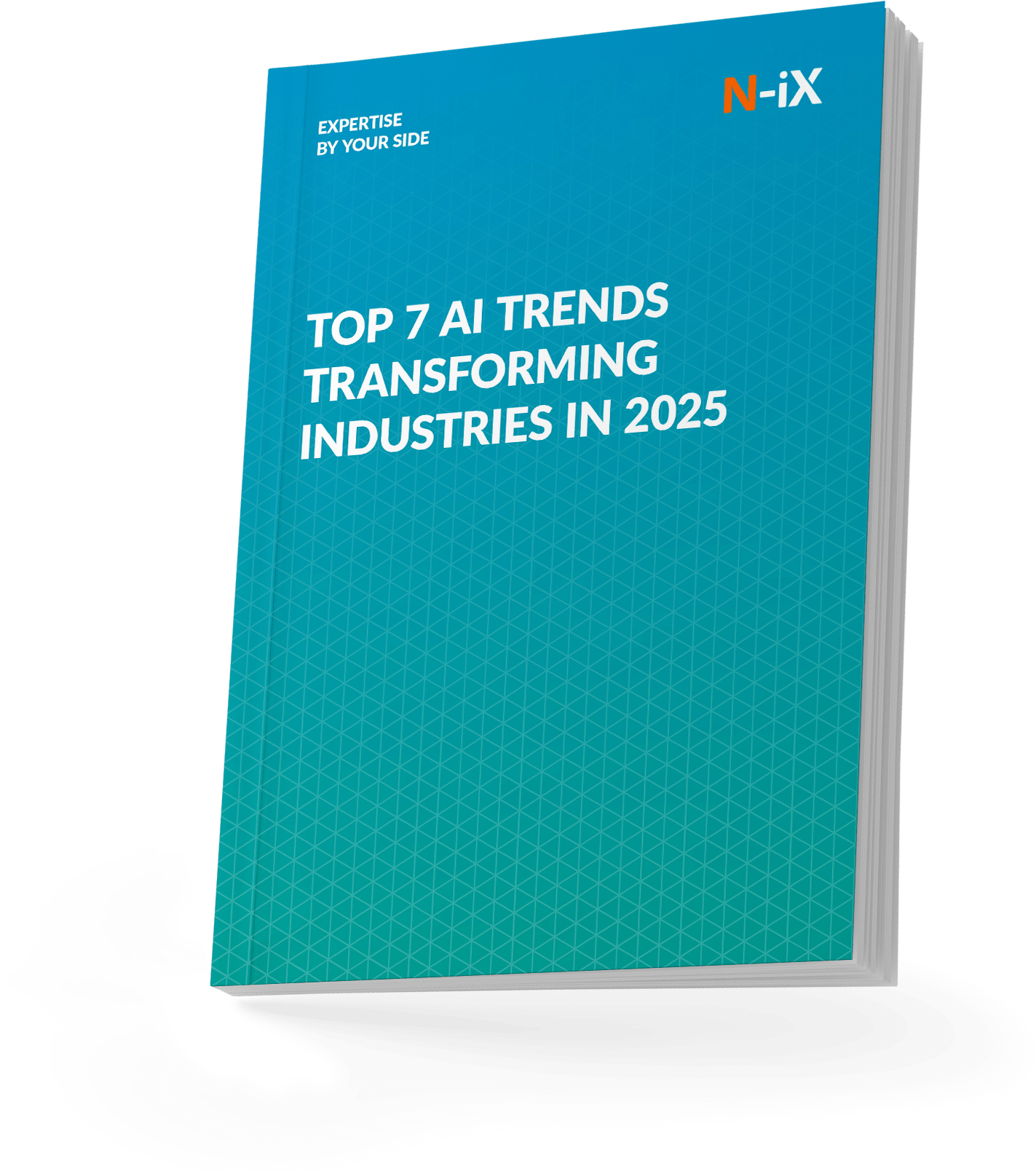Artificial intelligence is now widely applied across various fields, including cybersecurity. According to Statista, the global generative AI cybersecurity market size is forecasted to double from $24.3B in 2023 to $50.8B in 2026 and reach $133.8B by 2030. Such an interest in AI-powered tools for security is a result of accelerated automation, advanced threat detection, predictive analysis, cost savings, and other benefits. But how exactly can generative AI be used in cybersecurity? And how can AI be implemented without introducing new vulnerabilities or undermining existing protection mechanisms? In this article, we gathered the top 10 use cases of GenAI in cybersecurity and provided practical tips on successful adoption.

Why businesses implement generative AI in cybersecurity
The benefits of integrating generative AI into cybersecurity practices are vast. It offers both proactive and reactive solutions that improve response times, streamline security operations, and enhance overall protection, ensuring more effective defense against evolving threats. A recent survey by Statista shows the most common benefits for businesses when choosing GenAI in cybersecurity. We will take a closer look at the most important of them:

- Proactive threat identification: AI uncovers hidden or subtle threats that traditional tools might miss, allowing earlier detection and intervention to minimize potential damage.
- Better risk management: By analyzing extensive datasets, AI delivers actionable insights, helping organizations effectively evaluate, rank, and address risks in alignment with their priorities.
- Accelerated data analysis: Generative AI in cybersecurity accelerates the analysis of vast data volumes, offering near-instant identification of threats and enabling quicker decision-making compared to traditional methods.
- Enhanced security automation: AI automates cybersecurity processes, reducing dependency on manual intervention while dynamically adjusting defenses to respond to evolving threats in real-time.
- Cost savings: AI reduces the costs associated with manual cybersecurity operations, as well as the financial and reputational losses caused by successful cyberattacks.
Read more: Crafting a generative AI strategy: a guide
Explore the AI landscape of 2025—get the guide with top trends!


Success!

How can generative AI be used in cybersecurity?
When combining cybersecurity and generative AI, traditional defenses evolve into proactive, adaptive strategies. Here are ten common use cases on how it is changing security.
1. Adaptive threat detection
GenAI plays a crucial role in adaptive threat detection by continuously learning from historical data and identifying patterns and anomalies. This enables it to detect new and evolving cybersecurity threats in real-time. Its ability to adapt to changing attack methods provides a proactive defense, helping organizations stay ahead of malicious actors and reduce vulnerabilities.
For instance, GenAI enables analyzing network traffic, detecting unusual surges in data requests-such as those signaling a potential distributed denial-of-service (DDoS) attack-and immediately redirecting traffic and alert security teams.
2. Predictive analysis
Generative AI enables the processing of vast and complex datasets, uncovering hidden patterns and generating insights that help forecast potential future threats. By leveraging its adaptability and real-time analytical capabilities, cybersecurity generative AI enhances predictive analytics, enabling organizations to make more informed decisions and implement effective strategies for mitigating risks proactively.
3. Anomaly detection
Generative AI excels at anomaly detection by analyzing vast datasets and identifying subtle deviations from normal patterns. It allows to continuously monitor network traffic, system logs, and user behavior to promptly detect irregular activities that could indicate security threats.
AI-powered solutions can detect an unusual spike in outbound data transfers from a user account during off-hours, flagging this as potential data exfiltration. Triggering an immediate alert enables security teams to respond quickly, preventing sensitive data breaches and maintaining network integrity.

4. Data masking and privacy preservation
The integration of generative AI for cybersecurity is also used to produce synthetic data that closely mirrors real datasets, offering a valuable solution for protecting sensitive information.
Organizations can reduce the risks of privacy breaches by using synthetic data instead of actual datasets containing confidential or personally identifiable information. This data is ideal for training security models and algorithms, ensuring data privacy while harnessing the benefits of machine learning and advanced analytics. Generative AI thus enables organizations to balance privacy protection with the effective use of data-driven tools.
5. Malware generation and analysis
GenAI facilitates malware analysis by providing a controlled environment for cybersecurity research. It enables experts to create synthetic malware for safe analysis within secure sandboxes, helping them understand malware behavior, identify exploited vulnerabilities, and assess potential impacts.
Cybersecurity professionals can use GenAI to generate artificial malware samples based on known attack methods and vulnerabilities. Analyzing these samples provides valuable insights into malware tactics, propagation techniques, and evasion strategies, empowering teams to recognize and respond effectively to evolving threats.
6. Incident response
Generative AI cybersecurity tools transform incident response by automating critical aspects of handling security incidents. They allow to generate tailored actions or scripts based on the incident type, enabling security teams to automate initial responses, classify incidents by severity, and recommend effective mitigation strategies.
AI-powered solutions can quickly isolate compromised systems to limit damage during a breach. It can also simulate response strategies in real-time, helping teams evaluate and optimize their approaches. By streamlining incident response, generative AI in cybersecurity helps organizations save time, reduce costs, and enhance their overall security posture.
7. Reporting
Generative AI simplifies the creation of clear, insightful cybersecurity reports by synthesizing data from multiple sources and highlighting key findings, trends, and vulnerabilities. This saves time and ensures greater accuracy and depth, offering actionable insights for decision-makers.
AI enables identifying patterns or anomalies in the data and providing a nuanced analysis crucial for understanding cybersecurity threats and defenses. AI-generated reports can be customized for different audiences, from detailed technical analyses for IT teams to concise executive summaries for leadership, improving organizational communication.
8. Development assistance and coding security
Generative AI can be a valuable assistant for developers. It offers real-time feedback to ensure secure coding practices and adherence to the best standards. AI-powered coding tools analyze past examples to provide tailored recommendations and flag potential security risks. They also help prevent common errors, empowering developers to write safer and more reliable code throughout the software development lifecycle.
9. Automated security policy generation
AI-powered automated security policy generation enables organizations to create tailored policies that address specific security needs and adapt to evolving contexts. By analyzing infrastructure, user behavior, and compliance requirements, AI-powered tools generate robust, contextually relevant policies.
Unlike manual methods relying on generic templates, AI-driven solutions dynamically adjust to workflows, identify vulnerabilities, and balance strong security with operational flexibility. This approach streamlines alignment with regulations, reduces non-compliance risks, and ensures policies remain current. By minimizing manual effort, organizations can focus on strategic initiatives while maintaining a strong, adaptive defense against cyber threats.
10. Employee training and education
Generative AI is crucial in improving cybersecurity by training employees on best practices. It also strengthens defenses against threats such as phishing, enhancing overall organizational security. GenAI enables the creation of interactive training modules to educate teams on recognizing threats and adhering to security protocols, reducing human error-a common cause of cyberattacks.
Additionally, GenAI can analyze email content, sender behavior, and phishing patterns to detect and prevent these deceptive attacks, safeguarding individuals and organizations from one of the most widespread cybersecurity threats.
Read more: Generative AI implementation: Comprehensive guide

Wrap-up
Generative AI is transforming the security landscape with its ability to detect sophisticated threats, automate incident response, and enhance predictive analytics. These use cases demonstrate how generative AI in cybersecurity can fortify defenses by anticipating and countering evolving cyber threats. However, implementing GenAI solutions effectively requires careful planning, integration, and expertise.
Partnering with an experienced cybersecurity consultant can smoothen the implementation process. Security experts can help identify the right generative AI tools for your needs, streamline deployment, and provide guidance on aligning AI capabilities with your organization's security strategy. By leveraging specific expertise, businesses can maximize the benefits of generative AI while minimizing potential risks.
How can N-iX help you adopt generative AI in cybersecurity?
N-iX can become your trusted partner for implementing AI-driven security solutions, as we offer extensive expertise in generative AI and cybersecurity, providing comprehensive support for successful adoption. With over 2,400 tech professionals on board, we can design, develop, and implement the necessary technologies for you. Our security experts have successfully delivered over 100 projects protecting our clients' security posture. Our 200+ data, AI, and ML engineers have vast experience working with AI-powered technologies in different fields, including cybersecurity. N-iX also adheres to a wide array of security standards, such as CyberGRX, ISO 27001, ISO 9001:2008, ISO/IEC 27701:2019, PCI DSS, and FSQS, ensuring a reliable partnership in protecting your organization.
Have a question?
Speak to an expert




